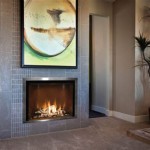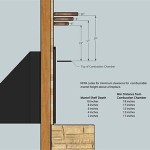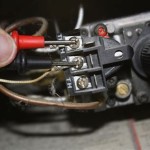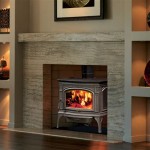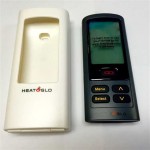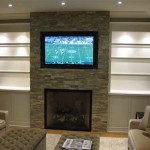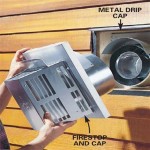How To Child Proof Fireplace Hearthstone Style Decks
Fireplaces, particularly those featuring hearthstone-style decks, add warmth and aesthetic appeal to a home. However, they also present potential hazards to young children. The hard surfaces, sharp edges, and elevated height of hearthstone decks can lead to bumps, bruises, and more serious injuries if precautions are not taken. This article outlines several effective strategies for childproofing a fireplace hearthstone deck, mitigating the risks associated with this architectural feature.
The primary goal of childproofing any area is to create a safe environment where children can explore and play without encountering unnecessary dangers. This requires a comprehensive approach that considers the specific characteristics of the space and the developmental stage of the child. Childproofing a hearthstone deck necessitates identifying potential hazards and implementing safeguards to minimize the risk of accidents.
Assessing the Hazards of a Hearthstone Deck
Before implementing any childproofing measures, a thorough assessment of the hearthstone deck is crucial. This assessment should identify all potential hazards that could pose a risk to a child. Key areas to consider include:
Hard Surfaces: Hearthstone materials, such as stone, brick, or concrete, are inherently hard. Falls onto these surfaces can result in significant injuries, particularly head trauma. The impact force is considerably greater than that of falls onto softer surfaces like carpet or grass.
Sharp Edges and Corners: The edges and corners of hearthstone decks are often sharp and unforgiving. Children, especially toddlers, are prone to falls and stumbles. Contact with these sharp edges can lead to cuts, scrapes, and more serious lacerations.
Elevated Height: Hearthstone decks are typically elevated above the surrounding floor level. This elevation increases the risk of falls. Even a relatively short fall from a hearthstone deck can result in injuries, especially if the child lands awkwardly or strikes their head.
Proximity to the Fireplace Opening: The proximity to the fireplace opening itself poses a burn risk. Even when the fireplace is not in use, residual heat may remain, and curious children may be tempted to reach inside, potentially encountering ash, embers, or other hazardous materials.
Irregular Surfaces: Some hearthstone designs feature irregular surfaces or protruding stones. These uneven surfaces can increase the risk of trips and falls, especially for young children who are still developing their motor skills.
The Fireplace Tools: Fireplace pokers, tongs, and shovels are often stored near the fireplace. These tools can be sharp and heavy, posing a risk of cuts, pokes, and bruises. Children are naturally curious and may attempt to play with these tools, leading to accidents.
By carefully assessing these potential hazards, parents and caregivers can develop a targeted childproofing strategy that effectively addresses the specific risks associated with their hearthstone deck.
Implementing Protective Barriers and Padding
One of the most effective strategies for childproofing a hearthstone deck is to create a physical barrier that prevents children from accessing the hazardous area. This can be achieved through several methods, each with its own advantages and disadvantages.
Hearth Gates: Hearth gates are specifically designed to enclose the fireplace and hearth area. These gates are typically made of metal or wood and feature adjustable sections that can be configured to fit a variety of hearth sizes and shapes. Hearth gates provide a secure barrier that prevents children from getting close to the fireplace and hearthstone deck. Look for gates that meet safety standards and are specifically designed for fireplace use.
Play Yards: A play yard, or playpen, can be used as a temporary barrier around the hearthstone deck. These portable enclosures provide a safe and confined space for children to play, preventing them from accessing the hazardous area. Play yards are particularly useful for younger children who are not yet mobile or for situations where temporary childproofing is needed.
Furniture Placement: Strategic placement of furniture can also help to create a barrier around the hearthstone deck. Positioning sofas, chairs, or bookshelves in front of the hearth can physically block access to the area. However, this method may not be as effective for older children who are more capable of climbing or moving furniture.
In addition to physical barriers, padding can be used to soften the hard surfaces of the hearthstone deck. This can help to reduce the severity of injuries in the event of a fall.
Edge and Corner Guards: Edge and corner guards are foam or rubber products that can be attached to the edges and corners of the hearthstone deck. These guards provide a cushion that absorbs impact and reduces the risk of cuts and bruises. Choose guards that are specifically designed for use on hard surfaces and are made of non-toxic materials.
Hearth Pads: Hearth pads are thick, padded mats that can be placed on top of the hearthstone deck. These pads provide a soft surface that cushions falls and reduces the risk of head injuries. Look for hearth pads that are fire-resistant and easy to clean. Custom-made hearth pads can be tailored to fit the exact dimensions of the hearthstone deck.
Foam Padding: In some cases, foam padding can be used to cover the entire hearthstone deck. This provides a comprehensive layer of protection against falls and impacts. However, foam padding may not be aesthetically pleasing and may require frequent cleaning.
When selecting protective barriers and padding, it is important to consider the age and developmental stage of the child. Younger children may require more comprehensive protection, while older children may only need limited safeguards. It is also important to choose products that are durable, easy to clean, and aesthetically compatible with the surrounding decor.
Implementing Safety Practices and Education
While physical barriers and padding are essential for childproofing a hearthstone deck, it is equally important to implement safe practices and educate children about the dangers of the fireplace area. This approach combines physical safeguards with behavioral modifications to create a comprehensive safety strategy.
Supervision: Close supervision is paramount, especially when children are playing near the fireplace area. Never leave young children unattended near a fireplace, even if it is childproofed. Vigilant supervision allows parents and caregivers to intervene quickly in the event of a potential hazard.
Establishing Boundaries: Clearly define the boundaries of the safe play area and teach children to respect those boundaries. Explain that the fireplace and hearthstone deck are off-limits without adult supervision. Use consistent language and reinforce the rules regularly.
Age-Appropriate Education: Educate children about the dangers of fire and the potential for burns. Use age-appropriate language and examples to explain why it is important to stay away from the fireplace. For younger children, focus on simple concepts like "hot" and "ouch." For older children, explain the science of fire and the potential consequences of playing with matches or lighters.
Secure Fireplace Tools: Store fireplace tools in a secure location, out of reach of children. Consider using a tool rack that can be mounted to the wall or a locked cabinet. Regularly check the tools to ensure that they are in good condition and that there are no sharp or broken edges.
Cover Electrical Outlets: If there are electrical outlets near the fireplace, cover them with safety caps to prevent children from inserting objects into the outlets. This is particularly important for outlets that are located at floor level.
Install Smoke Detectors: Ensure that smoke detectors are installed and functioning properly in the vicinity of the fireplace. Test the smoke detectors regularly to ensure that they are working. Replace the batteries in the smoke detectors at least twice a year.
Carbon Monoxide Detector: Install a carbon monoxide detector near the fireplace. Carbon monoxide is a colorless, odorless gas that can be produced by burning fuels such as wood, gas, or propane. Carbon monoxide poisoning can be fatal. Test the carbon monoxide detector regularly to ensure that it is working. Replace the batteries in the carbon monoxide detector at least twice a year.
Practice Fire Safety Drills: Conduct regular fire safety drills to ensure that everyone in the household knows what to do in the event of a fire. Practice escape routes and designate a meeting place outside the house.
By implementing these safety practices and educating children about the dangers of the fireplace area, parents and caregivers can create a safer environment for children to explore and play. This combination of physical safeguards and behavioral modifications is essential for minimizing the risk of accidents and injuries.
Childproofing a fireplace hearthstone deck is an ongoing process that requires constant vigilance and adaptation. As children grow and develop, their abilities and behaviors will change, necessitating adjustments to the childproofing measures. Regular reassessment and modification of the safety strategy are essential to ensure that the environment remains safe and secure for children of all ages.

No Child Proofing For Our Fireplace Hearthstone

Diy Black Roman Clay Fireplace Crystel Montengro Home

Charming Deck Oasis W Forest Views Dogfriendly Hoown Stayz

Deck Fireplace Ideas And Options
:strip_icc()/101343186-8909e34a95d74e0087ce39e27577ca41.jpg?strip=all)
How To Tile A Fireplace Hearth

75 Backyard Deck With A Fireplace Ideas You Ll Love June 2025 Houzz

Amazing Fire Pit Outdoor Fireplace Ideas

50 Fireplace Ideas For A Warm And Cozy Home In 2025

10 Outdoor Fireplace Ideas You Ll Want To Copy Bob Vila

5 Questions To Ask When Selecting An Outdoor Fireplace Belgard
Related Posts

